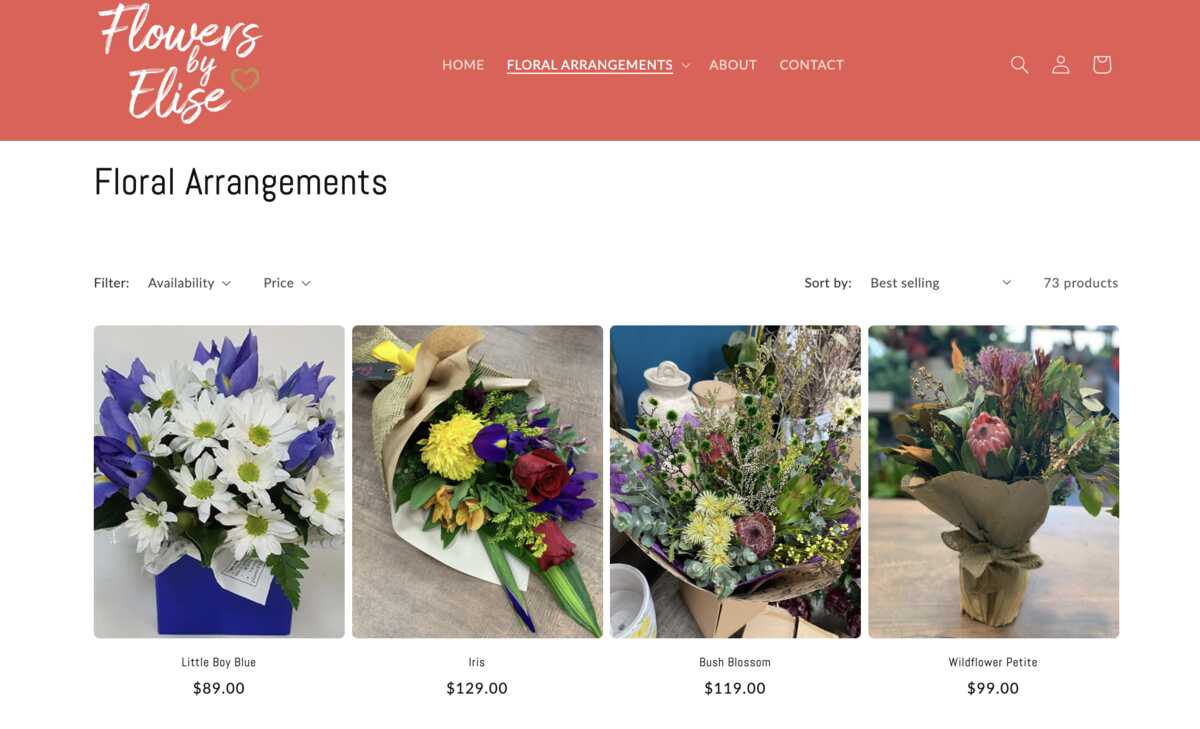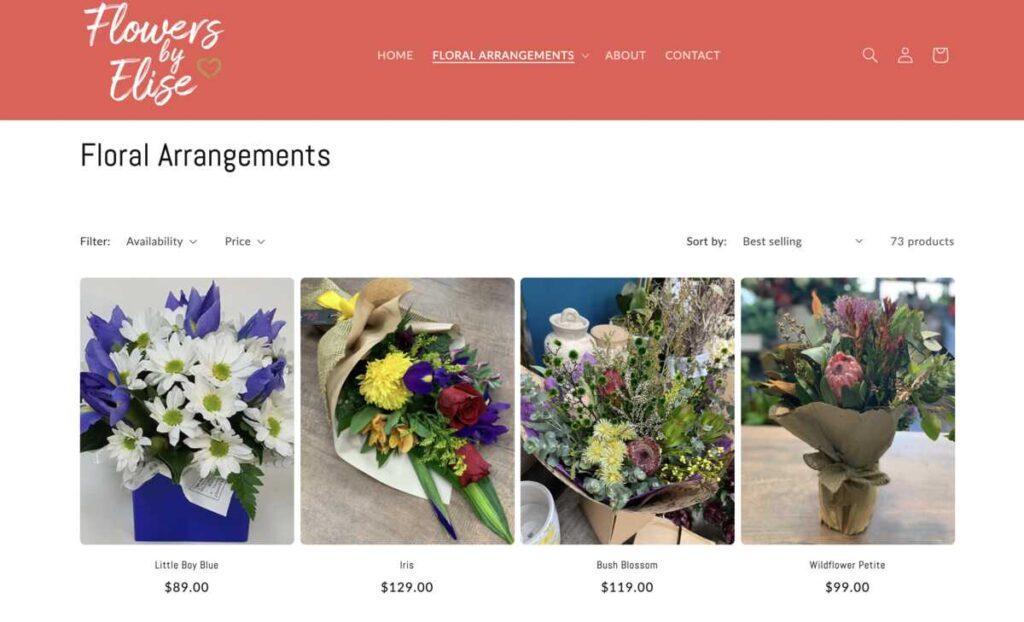When you’re running a small business, your small business web page is one of your most powerful tools. It’s the place where potential customers go to check you out and learn what you’re all about. So, if you’re building or revamping your website, there are a few must-have pages that can make your site work harder for you. We’ll share the basics, so you can make sure your website isn’t just sitting there, but actually driving some action.
Must-have pages for your small business web page
About us – Tell your story
The “About Us” page is a bit like the handshake of your small business web page. It’s your chance to introduce yourself and explain why you’re different. This page doesn’t have to be long or overly formal, but it should be clear and personal. You want visitors to feel like they’re getting to know the real you.
Start by talking about your business journey, why you started, what you stand for, and what problem you’re solving for your customers. Throw in some personality too. People love to support small businesses they feel connected to, so let them see who’s behind the scenes. Don’t forget to include photos of your team or the products you sell.
Pro tip: Keep it friendly and approachable. You’re not writing a corporate bio, you’re building trust.
Contact us – Make it easy to get in touch
If someone is visiting your small business web page, they’re probably looking for one of two things: information or action. To make it easy for visitors to reach out, you need a “Contact Us” page that’s easy to find and use. This page should include all the ways someone can get in touch with you, phone number, email, contact form, and social media links.
Be sure to make this page super simple. A contact form is a must, but keep it short and straightforward. Asking for a name, email, and message is plenty. If you have a physical location, include your address and maybe even a map. The easier it is to contact you, the more likely someone is to reach out.
Shop – Show off your products or services
For businesses that sell products or services, the “Shop” page is an absolute must-have. If you’re selling physical products, this is where your potential customers will go to browse and buy. Make sure the page is organised, visually appealing, and easy to navigate. Include clear images of your products and descriptions that make it obvious why someone should buy.
If you’re selling services instead, explain exactly what you offer, with prices or packages if possible. Highlight any key features or benefits of your services, and add a call-to-action that encourages users to book or inquire.
Remember, your “Shop” page isn’t just a catalog; it’s a sales tool. So, keep it clear, easy to navigate, and most importantly: user-friendly.
Homepage – The first impression
Okay, this one’s a given, but your homepage really needs to grab attention right away. It’s the first thing people will see when they land on your small business web page, so it has to make an impact. The homepage should be clean and professional, but also reflective of your brand’s personality. Keep things simple, too much information at once can be overwhelming.
Make sure your homepage includes a brief intro to what your business does, some key services or products, and an easy way for people to get in touch or start shopping. You’ve got a few seconds to hook visitors, so make it count.
Testimonials – Let your customers speak
This one is simple but powerful. A “Testimonials or reviews” page can give visitors social proof that your business is legit and worth their time and money. After all, people trust people more than they trust businesses. If you’ve had happy customers, ask them for a quick testimonial. A few lines about their experience with your products or services can go a long way.
For example, if you’re an electrician in Noosa, good reviews aren’t just helpful – they’re everything. Locals often search online and go straight to the reviews before even clicking through to your site. A few solid ratings can be the difference between getting a call or being skipped. You can also feature these testimonials on your homepage, or even the “Shop” page, if they’re relevant to specific products or services. Just be sure to keep it real and honest.
Blog – Share your expertise
Adding a blog to your small business web page is one of the best ways to connect with your audience and boost your website’s SEO. It’s a place where you can share tips, advice, and stories related to your industry, and it’s a great way to position your business as an expert in your field. Plus, Google loves fresh content, so regular blog posts can help improve your search engine rankings.
Your blog doesn’t have to be long-winded or fancy, just focus on helpful and interesting content. It could be anything from how-to guides to industry news, or even behind-the-scenes looks at your business.
Privacy policy – Be transparent
A privacy policy might not be the most exciting part of your small business web page, but it’s necessary. It tells your visitors what you do with their personal information and helps build trust. Plus, if you’re collecting any kind of customer data (even emails), you might be legally required to have one.
Don’t worry, you don’t need to write this yourself. There are plenty of free privacy policy generators out there, or you can ask a professional to help.
FAQ – Answer common questions
Having a “Frequently Asked Questions” page can save you a lot of time answering the same questions over and over again. It’s a great place to address common concerns or issues that might come up with your products or services. Plus, it can help your customers feel more informed and confident in making a purchase or reaching out to you.
This page doesn’t have to be long, but try to anticipate what your customers are likely to ask. If you’re getting a lot of the same questions, it’s time to add them to your FAQ page.
Gallery/Portfolio – Show off your work
If you offer a service, a gallery or portfolio page is a great way to show off your work. If you’re a photographer, designer, contractor, or anyone else who creates tangible results, showcasing your past projects will help potential customers understand your skills and the quality of your work. Include high-quality images, project descriptions, and client feedback if possible.
Terms and Conditions – Set expectations
Finally, it’s a good idea to include a “Terms and Conditions” page on your small business web page. This isn’t just for the big guys, small businesses can benefit from setting clear expectations about your products, services, and the use of your website. It can help protect you legally and ensure that customers know the rules.
A small business web page should be easy to navigate and include all the important information that your customers need. By focusing on pages like “About Us,” “Contact Us,” and “Shop,” you’re making it easier for your audience to find what they’re looking for and take action. Whether you’re just getting started or looking to upgrade your site, these pages will help you build trust, show off your products or services, and keep your customers engaged. So, get started and make your small business web page work for you!





0 Comments